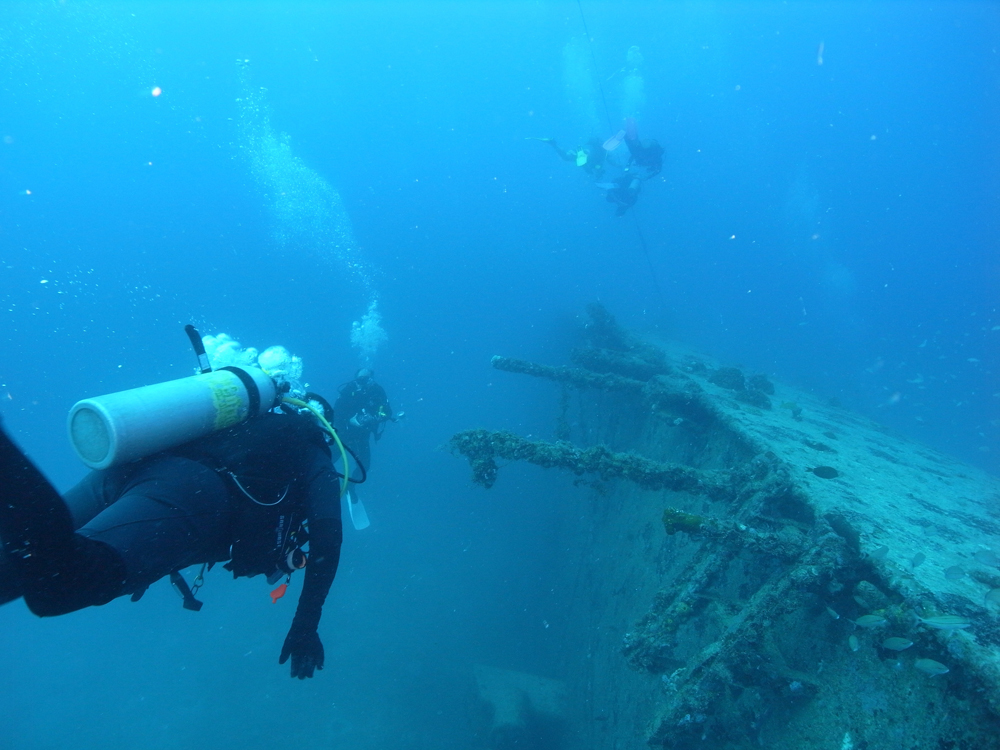For thousands of scuba divers and snorkelers who visit the Florida Keys annually, and want to log amazing dives along the continental United States’ only living coral barrier reef, there’s no better place to do it than Islamorada.
Why? Because Islamorada offers an iconic experience and massive populations of tropical marine life — and not just for divers who are so advanced that they’re practically part fish. The area is rich in underwater adventures for first-timers, families and fun-loving outdoor enthusiasts of all experience levels.
In Islamorada waters, you’ll find a wide variety of shallow coral reefs, mini-walls and shipwrecks — and even an underwater habitat for scientific research called the Aquarius. Along the reefs, high-profile coral heads and broad ledges shelter huge gatherings of French grunts and goatfish. Plus you can spot regal queen angelfish casually grazing amid recesses.

Along Islmorada’s reefs, high-profile coral heads and broad ledges shelter French grunts and goatfish, while regal queen angelfish casually graze amid recesses. (Photo by Tim Grollimund)
But that’s not all. Friendly green moray eels swim freely along the spur-and-groove channels, and reclusive nurse sharks lurk beneath the overhangs.
So which underwater areas should you explore on your next dive trip to Islamorada? Start with one (or more) of the underwater highlights here.
Davis Reef is revered for its incredible concentration of grunts and schoolmaster snapper — as well as several seemingly laid-back resident green morays that are well accustomed to benign interaction with the dive masters. The site is easily navigable among the top of the reef and sandy ledges. Large groupers and moray eels cruise among the cliffs and canyons, gullies and archways in depths from 15 to 40 feet.
Alligator Reef is marked by a towering 136-foot lighthouse (although it’s no longer a functioning one). At this spot in 1822, the USS Alligator grounded and sank while protecting a convoy from pirates. Now all that remains of the wreck are twin piles of ballast stones — but the coral reef, in just 25 feet of water, is vibrant and alive. (FYI, each fall several hundred solo and relay team swimmers participate in the Swim for Alligator Light, charting a 9-mile roundtrip course between the Islamorada shore and the lighthouse.)
The Eagle, a 287-foot ship that was intentionally sunk in 110 feet of water, is for advanced- or wreck-certified divers. Resting on its starboard side, cloaked in a colorful patina of encrusting sponge and coral, it’s populated by huge schools of grunts, tarpon and jacks.
Conch Wall offers an exciting change from the spur-and-groove profiles of most Keys reefs. There you’ll find a precipitous, sloping wall and captivating concentrations of barrel sponges and gorgonias punctuating the seafloor.

The area around Alligator Reef Lighthouse, about five miles to the south of Islamorada, is a popular snorkeling and diving location. (Photo by Andy Newman, Florida Keys News Bureau)
Crocker Reef features grunts, yellowtail and grouper hanging around at depths ranging from 30 to 60 feet. Its south end slopes along Crocker Wall, a wall of spur-and-groove coral formations and coral mounds that extends for more than 400 feet with gradual depths to nearly 80 feet.
Pickles Reef, a popular spot, offers macro photo enthusiasts a wonderful opportunity to encounter the reef’s minutia, from flamingo-tongue cowries to banded coral shrimp — all amid a dynamic coral reef in only 15 to 25 feet of water.
At Hens & Chickens Reef, it’s common to see large schools of blue striped grunts, big groupers, spotted eagle rays, nurse sharks, sea turtles, green moray eels, barrel sponges and sea fans.
Inviting as these spots are, Islamorada also offers other appealing adventures for divers. So on your next trip to the area, immerse yourself in the underwater world — and before you know it, you’ll have compiled your own list of favorites.

